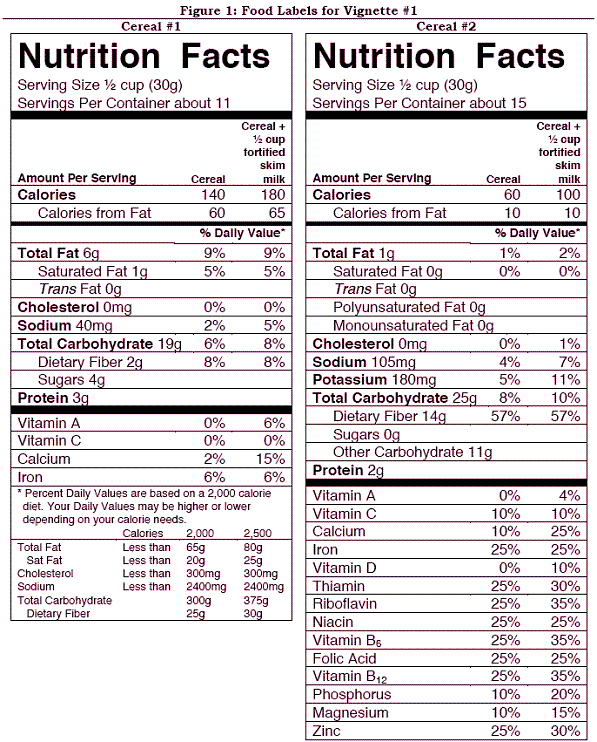A) Variety
B) Moderation
C) Balance
D) Adequacy
E) Calorie control
Correct Answer

verified
Correct Answer
verified
Multiple Choice
All of the following are equivalent to 1 ounce of grains except :
A) 1 slice of bread.
B) 1 English muffin.
C) 3 cups popcorn.
D) 1/2 cup cooked pasta.
Correct Answer

verified
Correct Answer
verified
Multiple Choice
All of the following foods contain phytochemicals except :
A) skim milk.
B) mushrooms.
C) canned peas.
D) a frozen tofu burger.
Correct Answer

verified
Correct Answer
verified
Multiple Choice
All of the following are equivalent to 1 ounce from the protein foods group except :
A) 1 egg.
B) 1/4 cup cooked dry beans.
C) 3 tbsp peanut butter.
D) 1/2 cup split pea soup.
Correct Answer

verified
Correct Answer
verified
Multiple Choice
Zach eats a 2000-calorie diet and therefore should eat no more than 65 grams of fat per day. While at the mall he had a soft pretzel (6 grams of fat) and a mocha coffee drink (20 grams of fat) . How many more grams of fat can Zach have to stay within his fat "budget"?
A) 26
B) 39
C) 91
D) There is not enough information provided.
Correct Answer

verified
B
Correct Answer
verified
Multiple Choice
Steven is 9 years old and loves to drink orange juice whenever he can. He often drinks orange juice instead of eating food. Which characteristic of healthy eating is this not in agreement with?
A) Balance
B) Calorie control
C) Moderation
D) Adequacy
Correct Answer

verified
Correct Answer
verified
Multiple Choice
For which nutrient is the current U.S. diet closest to meeting the 2010 Dietary Guidelines for Americans intake recommendation?
A) Vitamin D
B) Potassium
C) Calcium
D) Sodium
Correct Answer

verified
C
Correct Answer
verified
Multiple Choice
Which of the following is not a nutrient-dense food choice?
A) Bologna
B) Water-packed tuna
C) A baked potato
D) Whole grain bread
E) An orange
Correct Answer

verified
Correct Answer
verified
Multiple Choice
David wants to lower his risk of heart disease and decides to follow the Mediterranean diet. How often should he consume olive oil?
A) Daily
B) A few times a week
C) A few times a month
D) Never
Correct Answer

verified
Correct Answer
verified
Multiple Choice
Dietary Reference Intakes (DRI) should not be used to:
A) estimate nutrient requirements for healthy people.
B) assess dietary nutrient adequacy.
C) plan diets.
D) treat persons with diet-related illnesses.
Correct Answer

verified
Correct Answer
verified
Multiple Choice
Which of the following does not equal 1 tsp from the "Oils" group?
A) 1 tbsp low-fat mayonnaise
B) 2 tbsp light salad dressing
C) 1 oz peanuts
D) 1 tbsp soft margarine
Correct Answer

verified
Correct Answer
verified
Multiple Choice
The RDA for a nutrient is set at which point?
A) A point high enough to cover most healthy people
B) A minimum value you are supposed to exceed
C) An average value
D) An upper limit to prevent overdoses
Correct Answer

verified
Correct Answer
verified
Multiple Choice
A food label can make a health claim for sugar alcohols. Which disease is this nutrient associated with a lower risk of?
A) Heart disease
B) Cancer
C) Tooth decay
D) Liver disease
Correct Answer

verified
Correct Answer
verified
Short Answer
Compare the differences between meals served in a typical American Italian or American Chinese restaurant to meals traditionally eaten in these countries.
Correct Answer

verified
Correct Answer
verified
Multiple Choice
Which are the only vitamins that must appear on a food label?
A) Vitamins D and E
B) Folate and niacin
C) Riboflavin and vitamin C
D) Vitamins C and A
Correct Answer

verified
D
Correct Answer
verified
Short Answer
Propose five suggestions for smart snacking and discuss their value in achieving a healthy diet.
Correct Answer

verified
Correct Answer
verified
Short Answer
Explain why the "% Daily Value" is used on food labels rather than the DRI values.
Correct Answer

verified
Correct Answer
verified
Multiple Choice
Vignette #1 Carly is an overweight 21 year old who is committed to good health after taking a nutrition course. She realizes that being a savvy shopper is part of the process and decides to learn how to look more critically at food labels. She picks up two different boxes of ready-to-eat breakfast cereal and sees the food labels shown in Figure 1. Help Carly evaluate these 2 breakfast cereals.  Which cereal would provide the fewest calories per serving?
Which cereal would provide the fewest calories per serving?
A) Cereal #1
B) Cereal #2
C) Both cereals have the same calories per serving.
D) It is impossible to determine from the information provided.
Correct Answer

verified
Correct Answer
verified
Multiple Choice
Peaches are a food source of vitamins A and C. Why would a raw peach be considered a more nutrient-dense snack than a serving of peaches canned in light syrup?
A) The canned peaches are more processed than the raw peach.
B) The raw peach is brighter in color than the canned peaches.
C) The raw peach contains more vitamins per calorie than the canned peaches.
D) The canned peaches contain more vitamins per calorie than the raw peach.
Correct Answer

verified
Correct Answer
verified
Multiple Choice
Louise would like to lose some weight. How might the exchange lists be helpful to her?
A) Louise can easily compare several brands of a particular food to find the most nutrient-dense version.
B) Louise can identify low-calorie foods rich in each of the essential vitamins and minerals.
C) Louise can mix and match the portion sizes for different foods that provide the same number of calories to plan calorie-controlled meals.
D) Louise can determine which foods will prevent her from developing diabetes if she consumes them on a regular basis as she loses weight.
Correct Answer

verified
Correct Answer
verified
Showing 1 - 20 of 93
Related Exams